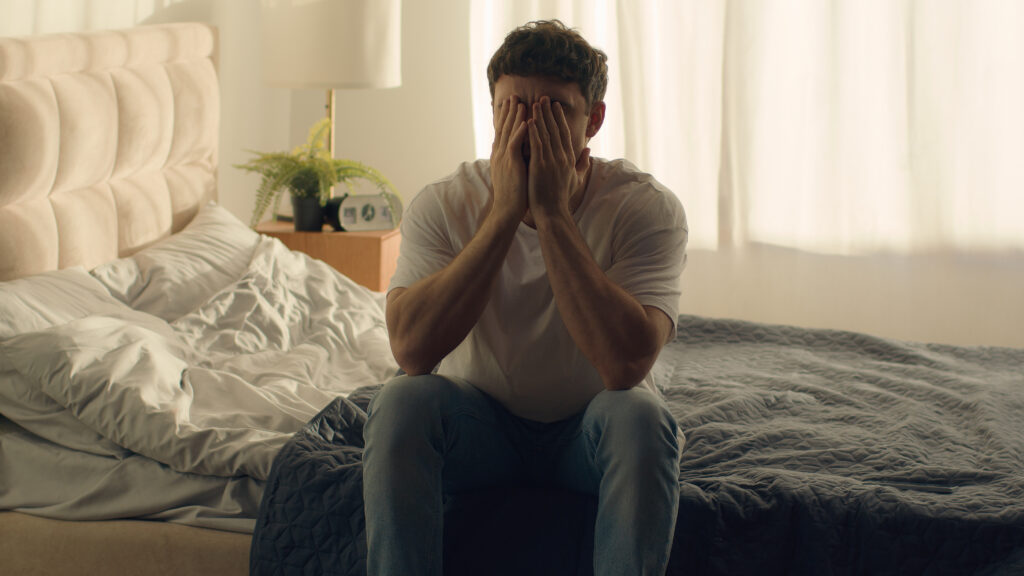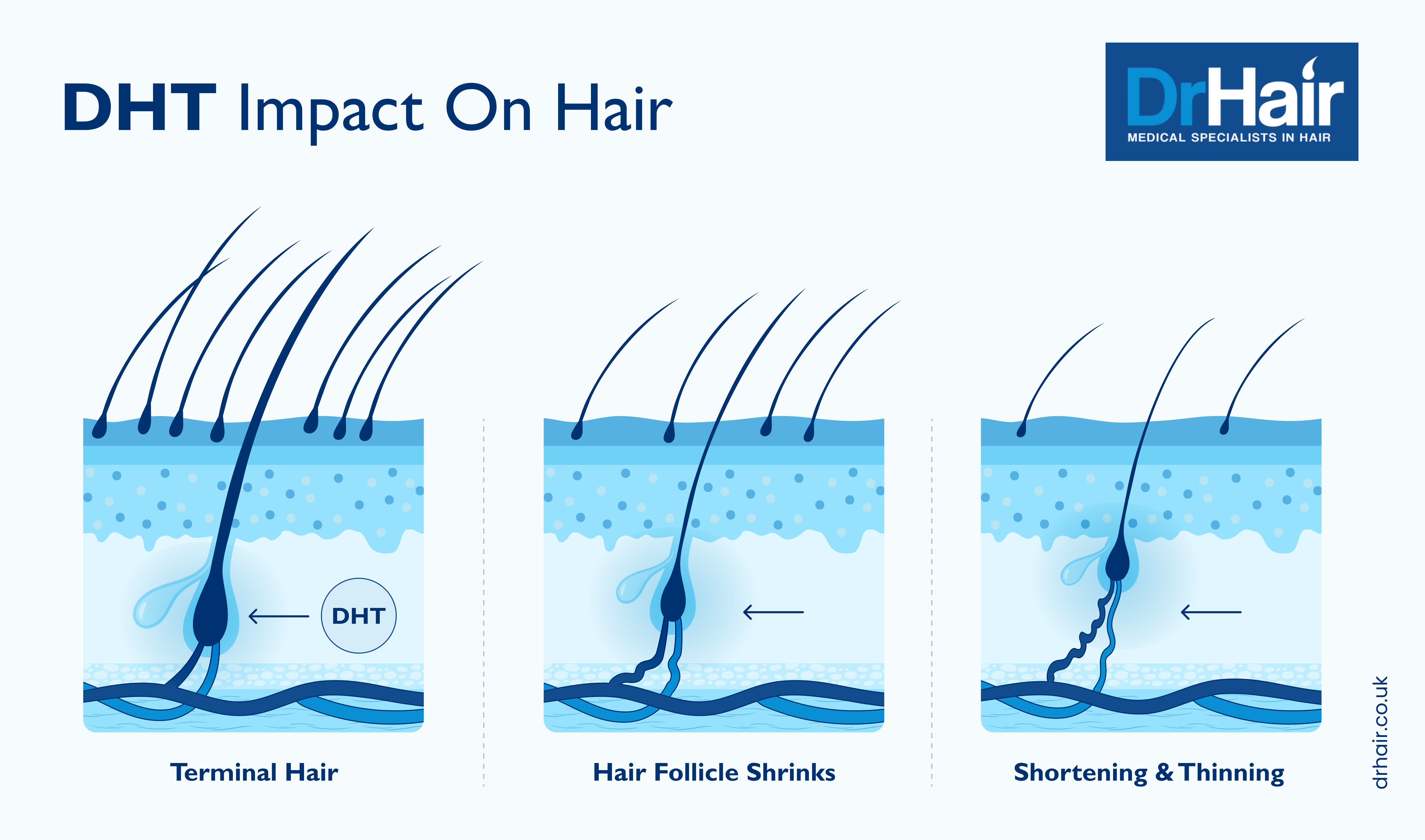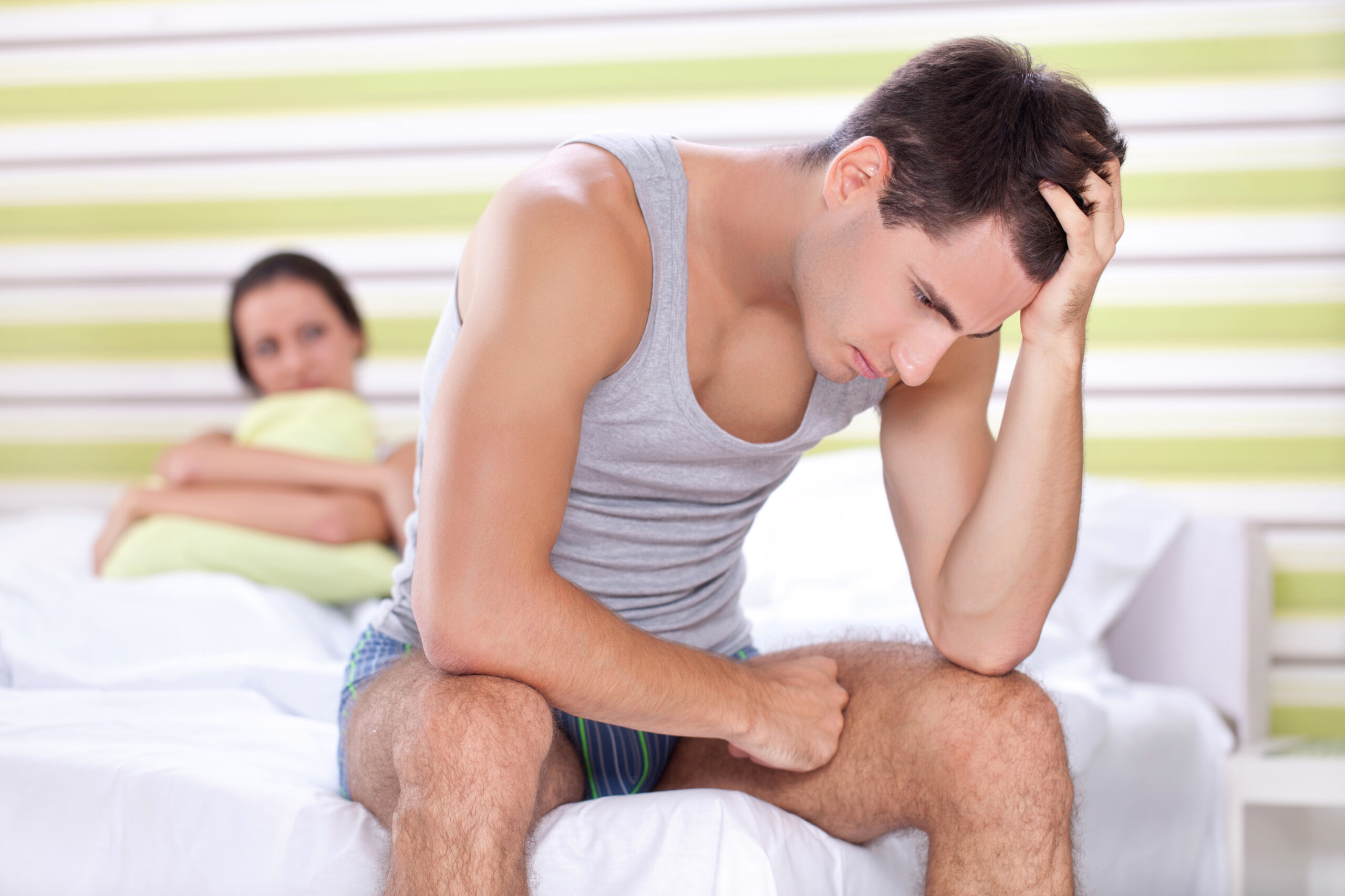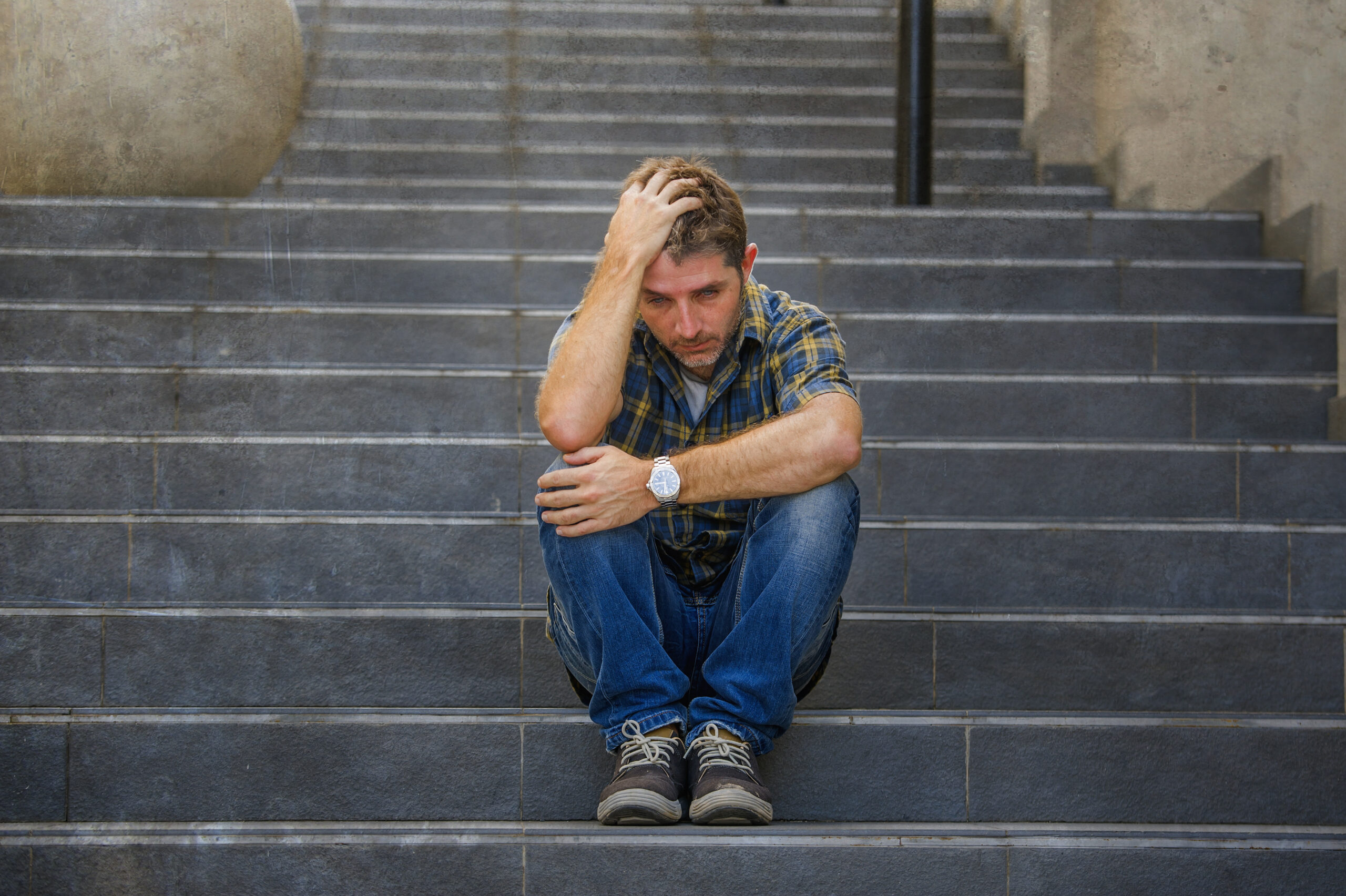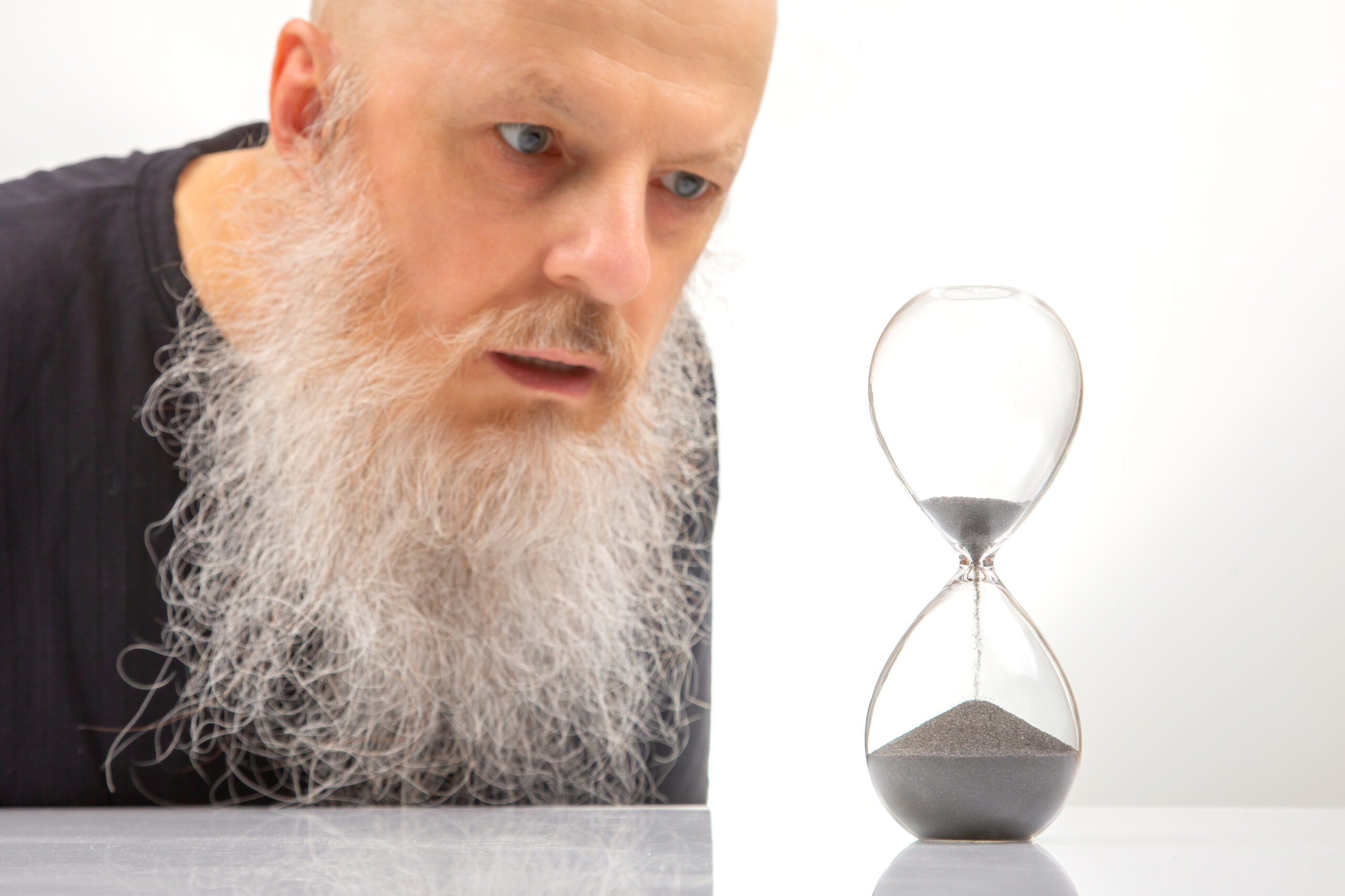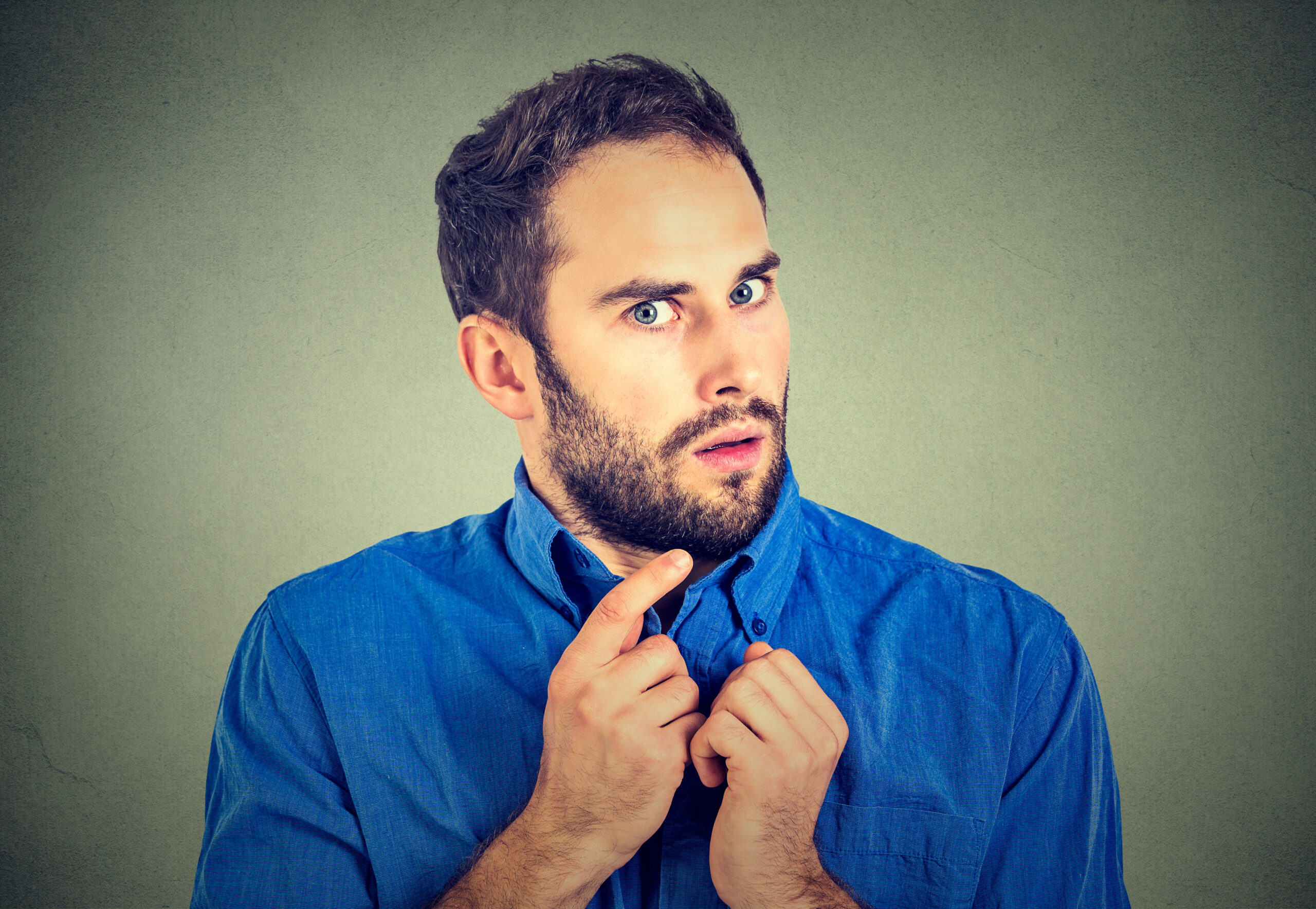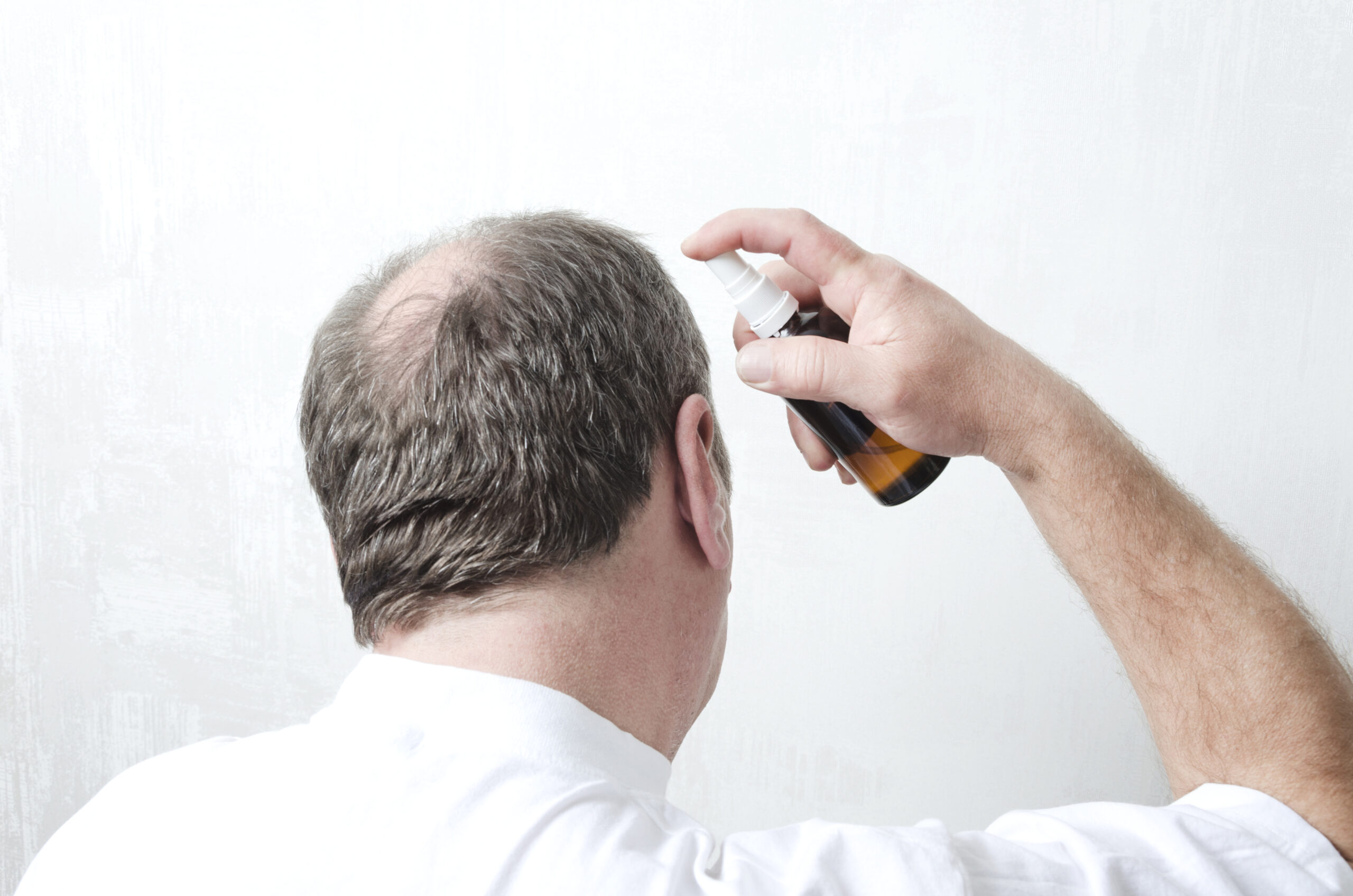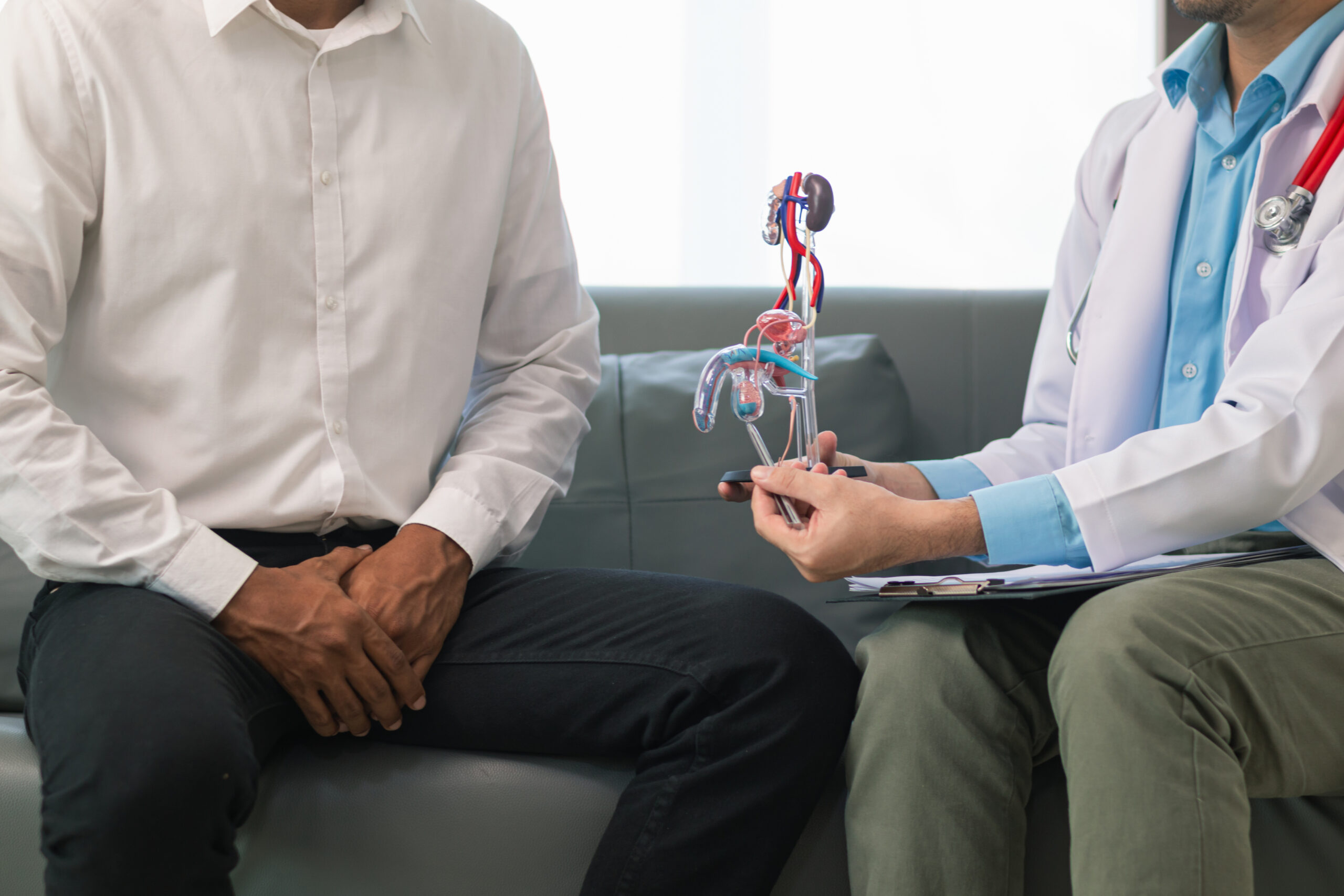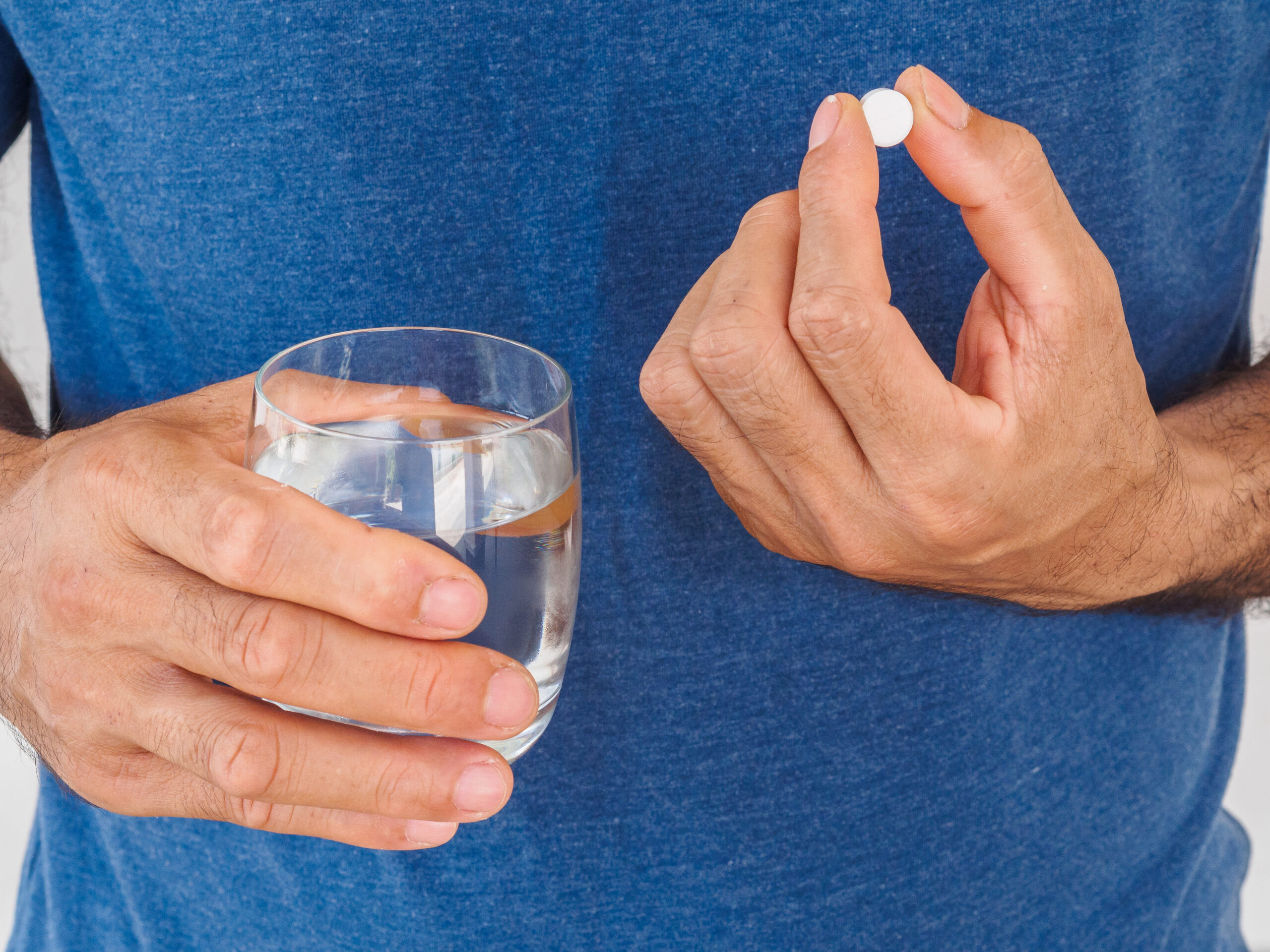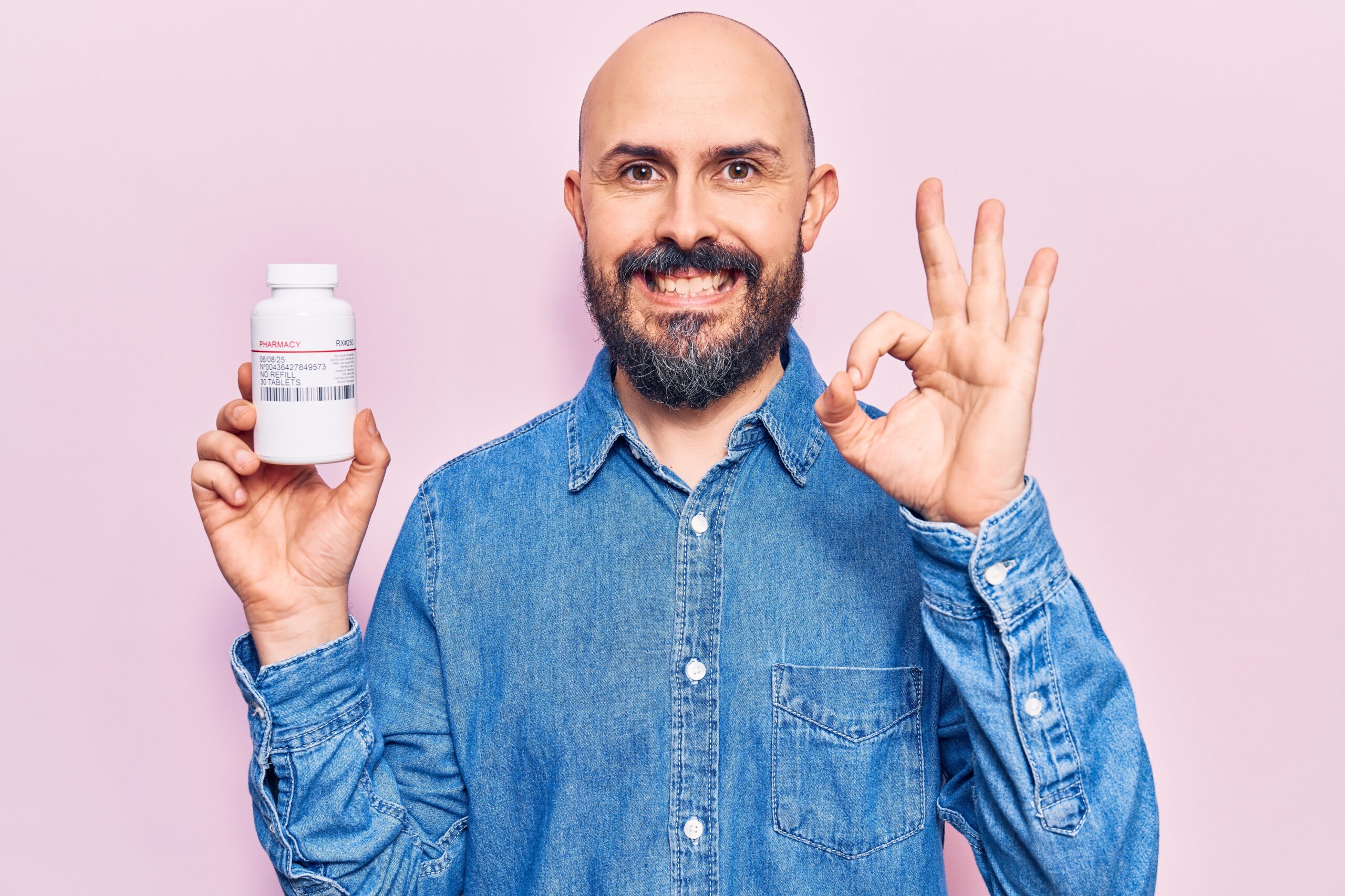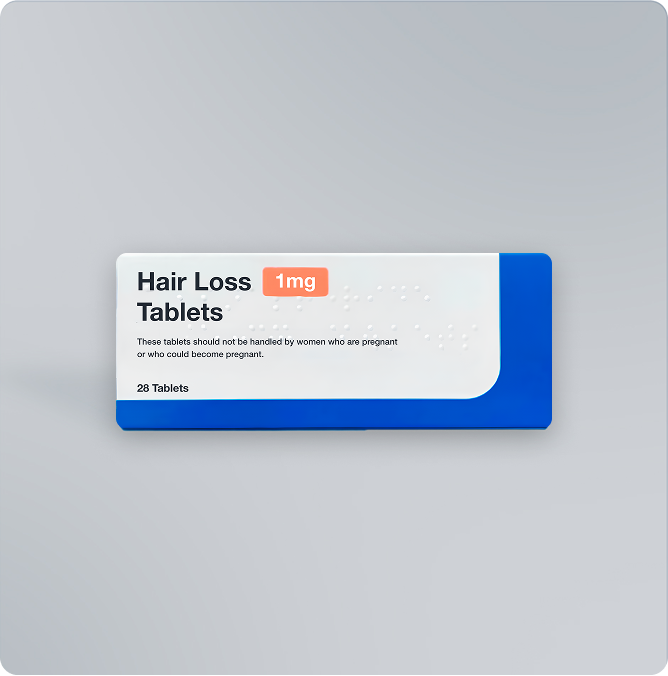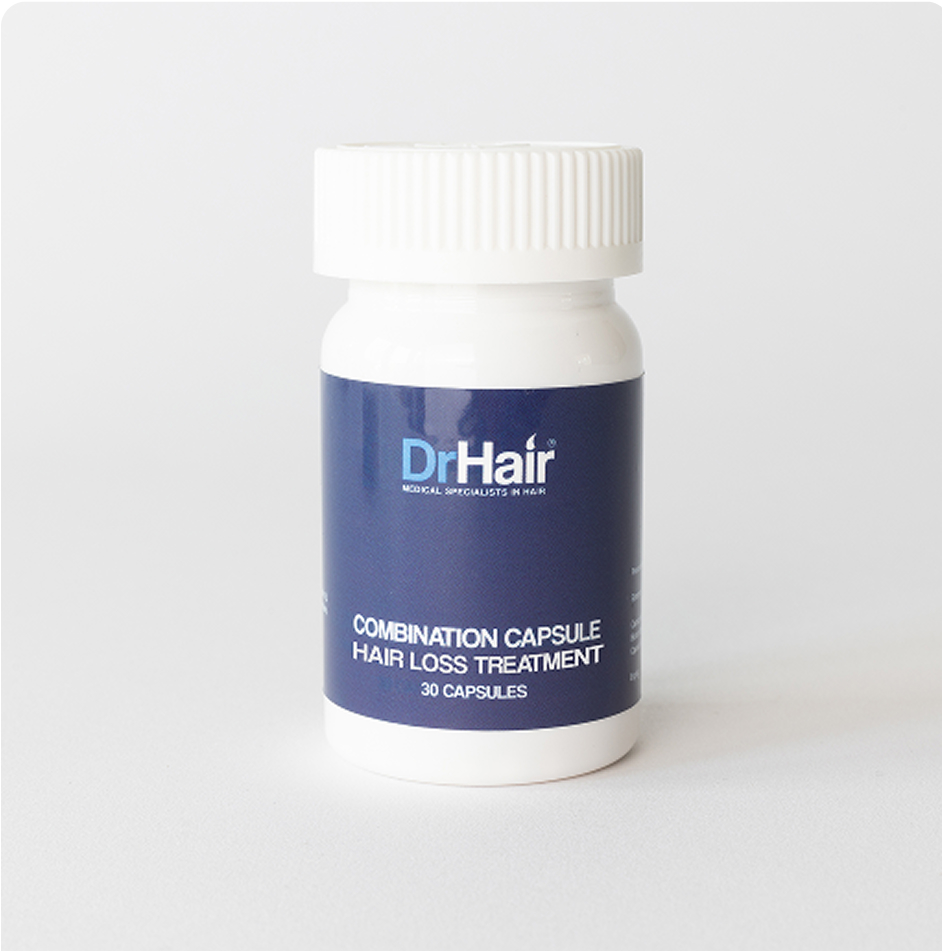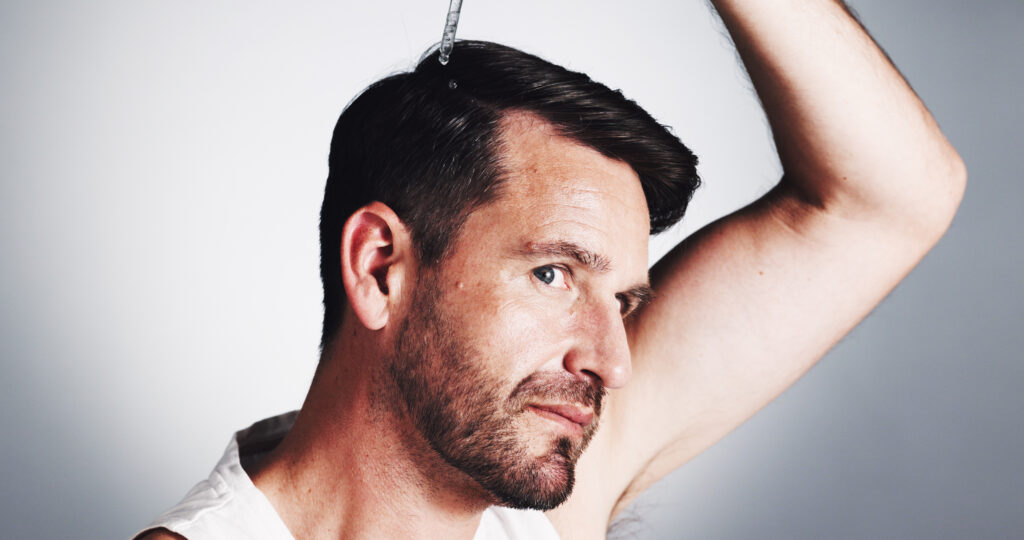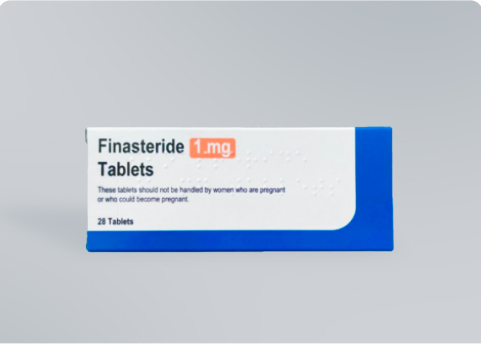Finasteride is one of the most effective hair loss medications for the 85% of men who experience different stages of male pattern baldness during their lifetime [1]. It is generally considered safe and well-tolerated [2][3] and millions of people use it worldwide. However, in rare cases, patients report some serious side effects of finasteride.
This article will tell you all you need to know about the more severe adverse reactions of this medication, such as:
- The main serious side effects of finasteride users can experience
- How long serious side effects normally last
- How to prevent or reduce the serious side effects of finasteride
- What to do if you’re experiencing adverse effects from this medication
Table of Contents
- What is finasteride and how does it work?
- Does finasteride have serious side effects?
- What are some serious side effects of finasteride in men?
- Psychiatric side effects of finasteride
- Finasteride adverse reactions and the nocebo effect
- Serious finasteride side effects in women
- How long do the serious side effects of finasteride last?
- Is post-finasteride syndrome real?
- Who can get the more serious side effects of finasteride?
- How can you reduce the serious side effects of finasteride?
- What to do if you experience finasteride side effects
- Is it safe to use finasteride for hair loss?
- Are you concerned about serious finasteride side effects?
- FAQs
What is finasteride and how does it work?
Finasteride is the most widely prescribed medication for male pattern baldness in the world. Finasteride works for hair loss by inhibiting the activity of an enzyme called 5-alpha-reductase [4]. This enzyme converts some of your testosterone into another male hormone called dihydrotestosterone (DHT). Excessive DHT binds to androgen receptors on your hair follicles, making them shrink and produce progressively finer hair until it stops growing altogether.
In men, the hairline, frontal area and crown are more sensitive to DHT than the rest of your scalp. That’s why hair loss occurs in the tell-tale pattern of male pattern baldness.
Using finasteride can reduce the levels of DHT in your blood or scalp by up to 70% [5]. This can curb and even reverse the symptoms of male pattern baldness, improving hair density and thickness.
Most patients use oral finasteride, which means they normally take one finasteride 1mg tablet each day. However, this can cause systemic side effects, as the medication travels through the bloodstream to reach the scalp. In recent years, patients have started to turn to topical finasteride as an effective and practical way to get the benefits of the medication with significantly milder side effects.
Does finasteride have serious side effects?
Finasteride was approved for hair loss by the FDA and the MHRA in the late 1990s [6]. It is a well-established medication that has been widely studied. Substantial research suggests finasteride has “an excellent safety profile” [2].
However, like any effective medication, it can also have adverse reactions. Some of these can be considered serious, even though they only occur very rarely and mostly in patients already genetically predisposed to them thanks to an increased sensitivity to DHT.
What are some serious side effects of finasteride in men?
While most finasteride side effects are mild, some can significantly impact male patients’ quality of life, physical and mental health, and social life [7]. The UK government has warned about these occurrences and both generic and branded finasteride companies must now list them on their patient information leaflets [8].
Sexual side effects of finasteride
Many researchers have documented the impact of finasteride on sexual and reproductive function. These conditions include (in the order of frequency):
- Erectile dysfunction
- Lowered sex drive
- Ejaculatory disorders
- Infertility (although only a small, temporary decrease in sperm count was proven)
The good news is that these adverse reactions are quite rare. A comprehensive review of 73 research papers found that they typically affect, on average, just 2.1-3.8% of finasteride users [9][10]. While some studies found a greater incidence, those were usually linked with higher doses of finasteride normally used to treat benign prostate enlargement. These can be up to 5 times higher than those used for hair loss.
The incidence rates of finasteride sexual side effects are higher than placebo, but only by a small margin and they significantly decrease with long-term use. In most cases, they subside within the first year of treatment.
It is difficult to isolate the causes of sexual dysfunction [10], especially when it comes to middle-aged men (the majority of finasteride patients) who also often report psychological side effects, such as anxiety or depression. Mental health issues can actively impair sexual function, as can preexisting health conditions (such as heart disease, diabetes, and prostate issues). Lifestyle factors like smoking, a sedentary lifestyle, and an unhealthy diet can also play a part. So more evidence is needed to prove that finasteride is the cause of these sexual problems.
Psychiatric side effects of finasteride
In some patients, finasteride use has been associated with psychiatric disorders [14][15][16] such as:
- Depression
- Anxiety
- Suicidal ideation (rarely)
While occurrences of finasteride-related depression are rare, in severe cases they can be life-threatening so it is important to stop taking finasteride and ask for professional help if you are experiencing them.
One study exploring the link between finasteride and psychiatric symptoms shows that depressive symptoms are reported by 3.33% of finasteride users, compared to 2.54% in the placebo group. Researchers also assessed that men who take this medication are 2.14 times more likely to develop depression than those who don’t [14].
However, this does not necessarily imply that the finasteride is directly causing these psychiatric symptoms. In some cases, they may be caused by the nocebo effect (discussed below). In others, they may be the result of sexual dysfunction or occur independently from finasteride use. Hair loss itself is associated with higher rates of anxiety and depression [17].
In some patients, psychiatric symptoms can be long-term and may even persist after finasteride cessation, often alongside sexual side effects. This is known as post-finasteride syndrome.
Carcinogenic side effects of finasteride
In extremely rare cases, finasteride use has been associated with breast cancer in men [18]. However, within a 12 year period, only 3 cases worldwide have been linked to finasteride 1mg, the most commonly used dosage for hair loss treatment. More have been linked to a 5mg dose [19].
The reported incidence of male breast cancer associated with finasteride only reaches a few cases per year, while there are millions of healthy finasteride users worldwide. Finasteride use alone is not known to cause cancer. It may only slightly increase the risk of predisposed individuals to develop this condition, especially when they are also exposed to other carcinogenic factors.
Finasteride adverse reactions and the nocebo effect
Some researchers believe that in many cases, the serious sexual and psychiatric adverse reactions of finasteride are not the result of the medication itself, but are caused by the nocebo effect [11][12][17]. This effect occurs when patients fear or expect side effects from their medication to the point where those symptoms develop.
Research shows that patients who are informed of finasteride side effects report more adverse reactions than those who are not. And increasing online talk about finasteride side effects may have sparked an increase in reported side effects [13].
Serious finasteride side effects in women
Finasteride is not normally recommended for premenopausal women. That is because it can cause foetal malformations in pregnant women [20], as well as hormonal imbalances and menstrual irregularities in female patients.
However, finasteride for women with female pattern hair loss is sometimes prescribed off label (provided they have reached menopause), with promising results. No serious finasteride side effects have been reported in this group [21].
How long do the serious side effects of finasteride last?
In most patients, the side effects of finasteride subside without any intervention with consistent, long-term use [4][10]. After the first year of taking this medication, studies show a sexual side effect rate comparable to placebo and by the 5-year mark, the incidence drops to less than 0.3% of patients [10].
In most cases, discontinuing finasteride treatment will also quickly reverse sexual side effects, often in a matter of days [10]. However, very rarely, men have reported lingering sexual and psychological dysfunction that can last for months or even years after the end of treatment. This is commonly known as post-finasteride syndrome.
Is post-finasteride syndrome real?
Rarely, patients who have discontinued finasteride treatment report continuing symptoms of erectile dysfunction, low libido due to finasteride use, ejaculatory dysfunction, as well as depression and anxiety [22][23].
There is an ongoing debate in the scientific community regarding the nature of post-finasteride syndrome, but further evidence is needed to settle it. So far, a definitive connection between finasteride use and long-lasting side effects after stopping treatment has not been proven [24].
Some researchers have concluded that post-finasteride syndrome is the result of the nocebo effect combined with unrelated health conditions (such as cardiovascular problems, diabetes, pre-existing sexual dysfunction or a history of mental issues).
Others believe that there are too many reports of post-finasteride side effects to ignore, especially when comparing them to other hair loss medications [25]. They propose that post-finasteride syndrome occurs because the treatment affects the level of neuroactive steroids in the brain [16][25].
These steroids play a role in both sexual function and mood regulation. Deficiency has been associated with most of the symptoms reported by patients with post-finasteride syndrome [16][25]. However, more research is needed to prove this theory.
Who can get the more serious side effects of finasteride?
Anyone can experience more serious finasteride side effects, even though the likelihood is very low. In most cases, genetic predisposition to developing sexual or psychological dysfunctions and increased DHT sensitivity play an important role in their occurrence.
DHT is essential for healthy sexual function. So if you are highly sensitive to DHT fluctuations and you have a history of sexual dysfunction and/or psychological disorders, you may have a greater chance of experiencing side effects.
Moreover, the nocebo effect is believed to be responsible for at least some of the serious finasteride side effect reports. So patients who start treatment expecting adverse reactions have an increased risk of actually experiencing them.
Finally, when it comes to psychiatric side effects, such as depression, anxiety and suicidality, a link has been found between the patient’s age and an increased rate of adverse reactions. Patients younger than 45 may be more prone to reporting suicidal thoughts, depression and anxiety while using finasteride [26].
How can you reduce the serious side effects of finasteride?
The good news is that there are things you can do to help prevent or reduce finasteride side effects. Here are some of the most effective options.
Try topical finasteride
Research shows that lotions, gels, sprays or foams that contain finasteride can be as effective as oral tablets. Moreover, almost 97% of topical finasteride side effects are mild to moderate [27]. This solution has significantly fewer side effects than the tablets because it enters your bloodstream in negligible quantities, only reducing the levels of DHT in your scalp.
See a doctor for your symptoms
Some of your symptoms may have other contributing factors besides finasteride use alone, while others may be treatable with the right medication.
Seeing your GP can help rule out underlying health conditions or lifestyle aspects that could be contributing to your complaints. They can also refer you to a specialist or recommend treatment that might resolve your symptoms without needing to stop finasteride use.
Take your medication exactly as prescribed
Never take finasteride without a doctor’s prescription. A medical professional will take an account of your medical history and make sure the finasteride does not interfere with your existing medication or pre-existing health conditions.
When you get your prescription, it is best to follow it to the letter. Don’t exceed the recommended dosage because you forgot to take the previous dose, or in hopes of getting a more powerful effect. It can interfere with your hormone levels and cause unwanted side effects.
Keep a positive outlook regarding your treatment
Research shows that patients who were warned about finasteride side effects reported significantly more adverse reactions than those who were not [11]. This doesn’t mean that they were lying or making up symptoms; they really experienced them due to the nocebo effect.
So try to remember that serious finasteride side effects are quite uncommon and that most men take finasteride for years without any significant problems. Thinking positively will keep the nocebo effect at bay. If you have difficulty overcoming the anxiety, it may be best to try topical finasteride to make you feel safer from the get-go.
Maintain a healthy lifestyle
Making some adjustments to your lifestyle can improve both your sexual performance and mental health. Eating nutritious meals, exercising regularly, and keeping your stress levels in check can reduce the risk of sexual dysfunctions or psychological disorders.
Quitting or even reducing smoking can do wonders for your overall health and your sexual performance alike. Nicotine is a vasoconstrictor, which means it can reduce blood flow to your penis, leading to erectile dysfunction [28].
Seek the support of a therapist
Going into therapy can help you relax, learn how to cope with stress and negative experiences, and overcome problems that can accumulate and lead to anxiety or depression. Your therapist can also help you avoid worrying excessively about finasteride side effects, decreasing your chances of experiencing the nocebo effect.
Moreover, sexual dysfunction is often psychological, especially in healthy younger men. A sex therapist can help you improve your sexual function and reduce the impact of finasteride on your performance.
What to do if you experience finasteride side effects
If you believe you are experiencing finasteride side effects, the best thing you can do is to talk about it with your prescribing trichologist or GP. They can recommend blood tests to check your hormone levels and help you rule out other physical conditions that may be causing the symptoms you are experiencing (such as a heart condition, blood pressure issues, or diabetes).
If your doctor believes that finasteride may be responsible for your symptoms, it is safe to discontinue treatment at any time. Should symptoms persist, it is best to see an appropriate specialist.
Is it safe to use finasteride for hair loss?
Yes, you can rest assured that finasteride is generally safe to use. Millions of men across the world take finasteride for hair loss with no major issues. The incidence of serious side effects is very small, to the extent that some authors report that “adverse effects are rarely encountered in clinical practice.” [2]
Moreover, most symptoms subside over time or when you stop treatment. Numerous studies have concluded that this medication is safe to use, and its risks outweigh its benefits in most people [2][3].
While wanting to be aware of the serious side effects of your medication is normal and healthy, be sure to keep a positive attitude during finasteride treatment. This can actively help you prevent unwanted symptoms caused by the nocebo effect.
Are you concerned about serious finasteride side effects?
If you are worried that you might be one of the few patients who develop serious finasteride side effects, you may be able to regrow your hair without using oral finasteride. DrHair’s topical finasteride + minoxidil formula is unlikely to generate any systemic side effects, such as sexual dysfunction, psychiatric symptoms or male breast cancer.
This treatment harnesses the joint effectiveness of the best two hair loss medications on the market. When combined, finasteride and minoxidil results are excellent, as they can reduce male pattern baldness by up to 94% [13].
Book an online consultation with our experienced doctor-led support team and they will help you determine if this medication is the best choice for you or if you could benefit more from another of our hair loss products.
FAQs
Learn more about finasteride and serious adverse reactions in these FAQs.
Higher doses of finasteride can slightly increase the risk of side effects, but these doses are often used in treating an enlarged prostate, not for hair loss. The most commonly used dose of finasteride for treating male pattern baldness is 1 mg. Research shows that the difference between the side effects of finasteride 1 mg and 5 mg exists, but it is minimal [3].
Finasteride has an average half-life of only 4.8 hours [29]. This means that half of the medication will have left your system less than 5 hours after entering your bloodstream. In another 5 hours, half of the remaining quantity will be gone, and so on.
This means that it takes finasteride a couple of days to fully leave your system. So if you are thinking of ending your treatment due to side effects, you should start feeling better very soon.
Milder side effects of oral finasteride can include testicular pain, skin rashes and breast swelling or tenderness.
Topical finasteride can cause scalp itching, burning, redness, flaking, irritation or contact dermatitis.
In most cases, finasteride side effects are temporary and improve considerably over time. In very rare cases, some users report adverse reactions that last for months or even years after stopping treatment. However, permanent finasteride side effects are unlikely to happen from normal finasteride use.
If during your finasteride treatment, you start experiencing concerning symptoms which don’t improve after a few months, see your GP for advice. They might be a sign of post-finasteride syndrome, but could also be due to an unrelated underlying condition.


